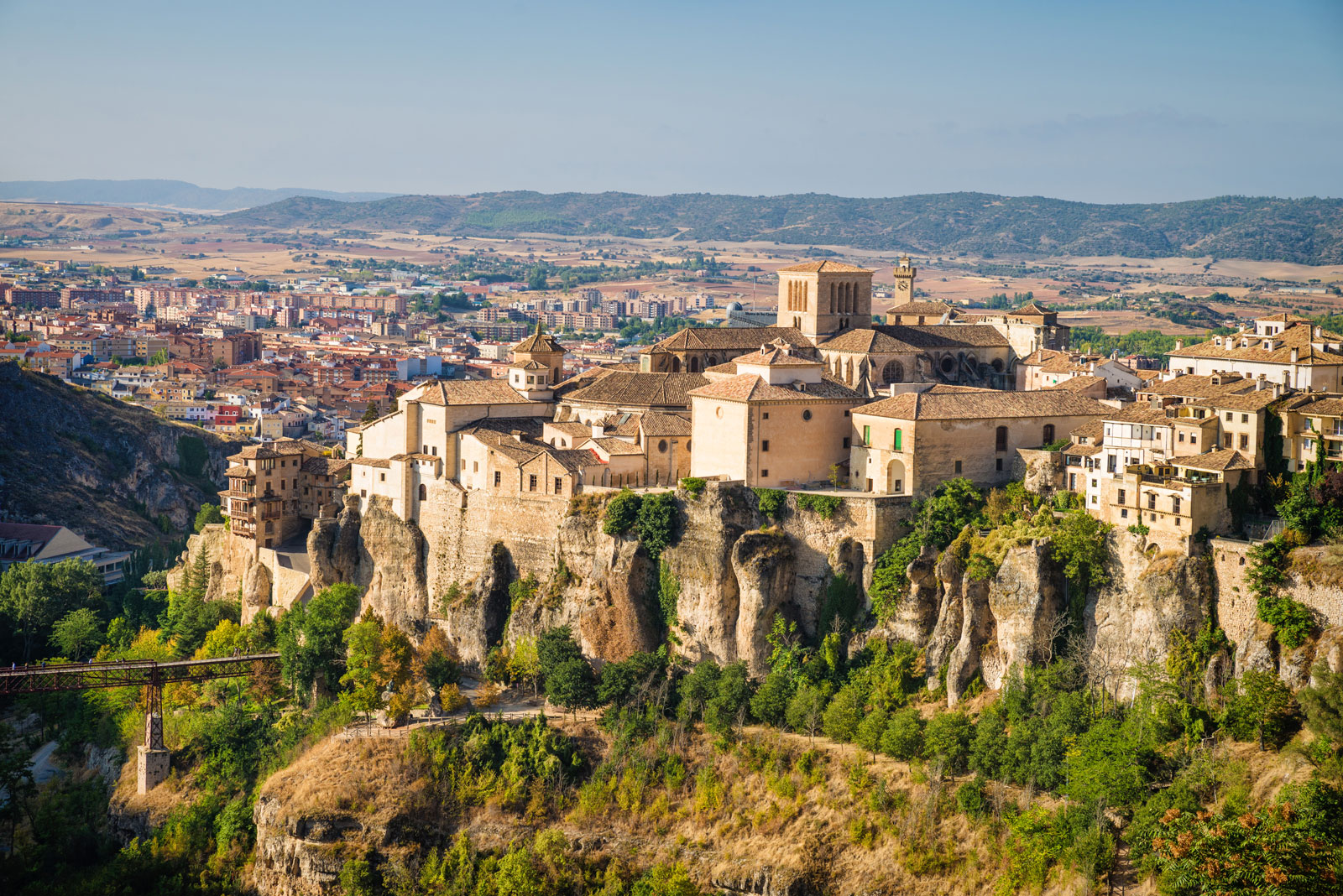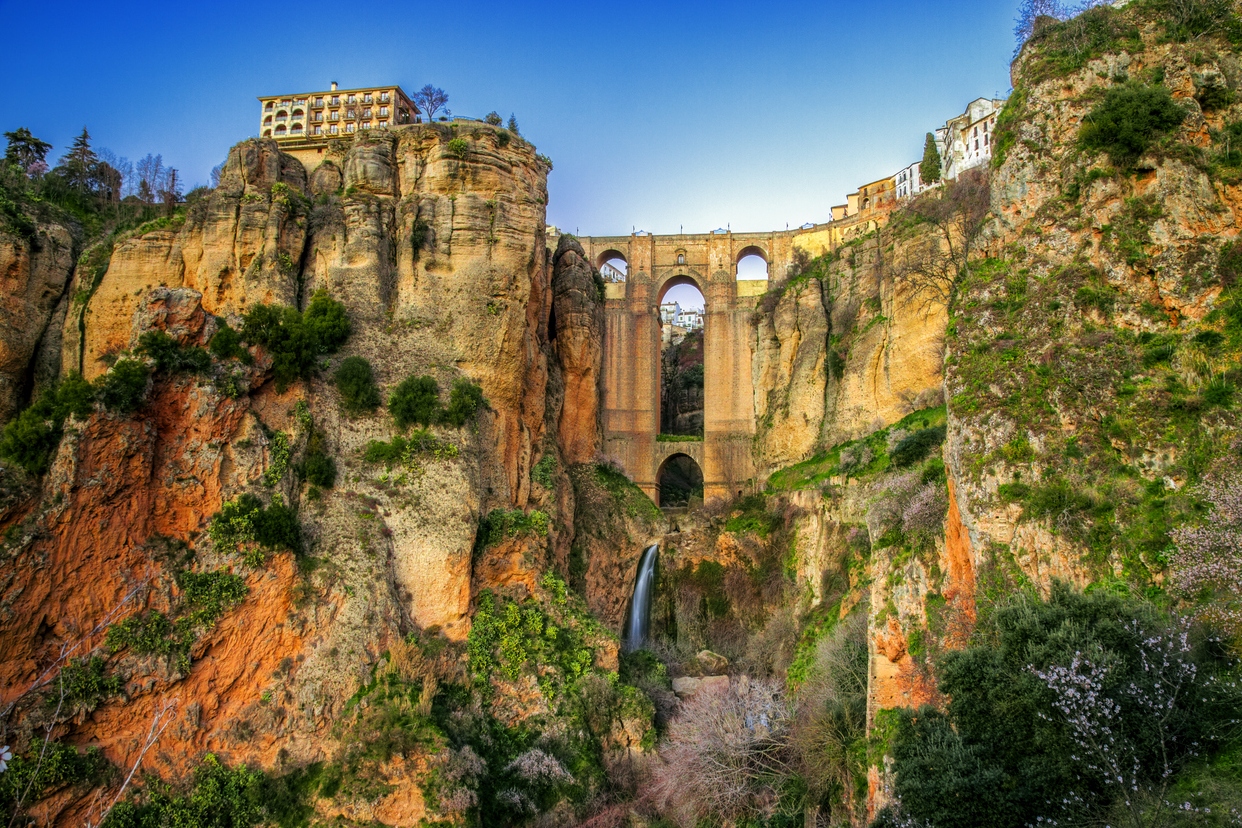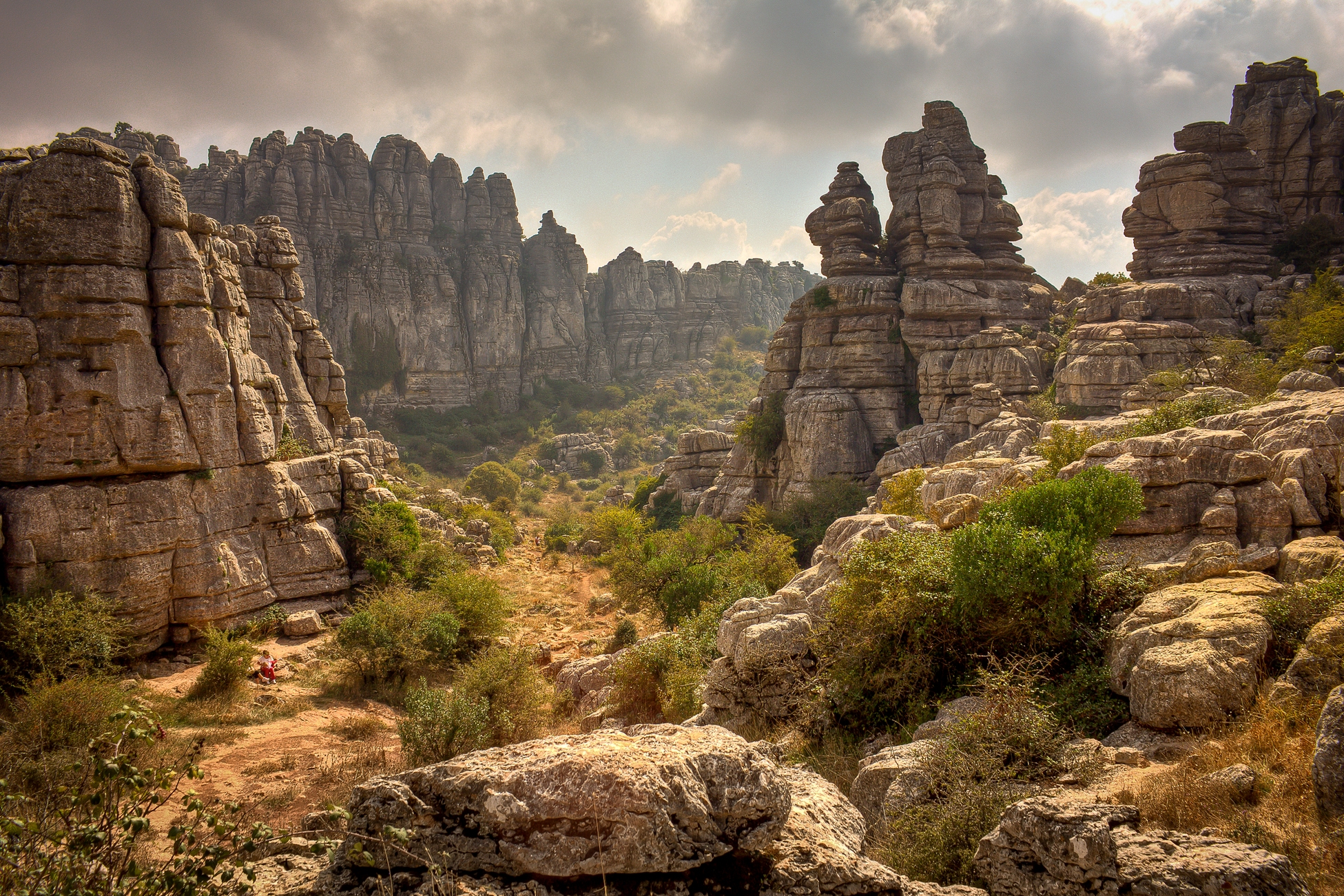Cities in Rrocks: Spanish Edition

Collection of works of Spanish authors strikes with diversity and beauty - today OUTLOOK suggests you have a cursory glance at pages of the library, cherished and treasued by Felipe VI.
Volume 1. Cuenca
Real-life historic drama was written in these rocks. City fortfications of Cuenca hedged, seemingly, every people under the sun over almost 2000-years-long history of the city. For Celts, Romans, Arabs and Christians it turned out to be a solid-as-rock shelter.
The old town occupies a rather small territory yet treasures architectural stamps of all peoples who thought they were the masters of present-day capital of the namesake province. All the roads of medieval Cuenca, unless they hit a precipice, sure lead to Plaza Mayor - and it is located in the centre of diversity not only topography-wise. On it, nearby Spain's oldest gothic cathedral, construction of which began in 1182, cars rush without slowing down. They deftly make it through archs, that mark the entrance, and pass by guests of a cafe - among its tables a post with traffic lights rises. In the very same spot tourists as nearly as lay on stone block pavement attempting to make colorful facades of houses, neighboring the cathedral, fit into one photoshot.
Photo britannica.com
There is even a special spot in the city that helps cunclusively prove: there is a reason why Cuenca is included into UNESCO World Heritage list as a well-preserved medieval fortified city. From there you can appreciate all the fragility and charm of the famous casas colgadas (Hanging Houses). However to get to the place you'll have not only to leave the borders of the old town but also hike for some two or three kilometers along a touristic route - at least the location is marked in a way that it is really hard to misunderstand its purpose.
Volume 2. Setenil de las Bodegas
A modest-in-size novel of everyday life is a very appealing genre and it suits Setenil de las Bodegas perfectly. In this antipodal city of Oakland of New Zealand people aren't accustomed to tourists yet - especially in the very part of the town that evokes greatest interest. In houses, that rocks hang over, mostly people of venerable age live and what they want is not flashes of photo cameras but simple peace and coziness..jpg) Photo iberianmobility.com
Photo iberianmobility.com
As to the latter one, not all of them are lucky to have it. Dwellers of neat, improved houses, who even have own roofs that differ from natural, hardly have things to repine over. For inhabitants of a different kind of houses, on the other hand, sloughing rocks serve as ceiling and space of dwellings only slightly exceeds the one of a tent for three. However this doesn't subtract even a fraction from exoticism and picturesqueness of local landscapes.
Volume 3. Ronda
Distinctive feature of this novel is that one of its chapters resembles a glossy magazine closely. Annually famous bullfights take place in Ronda - it was during them in 2009 when torero Cayetano Rivera Ordóñez appeared in a splendid outfit specially elaborated for him by a fashion world genius Giorgio Armani. The event itself is incredibly popular, it is traditionally hosted by Spain's oldest purpose-specific arena Plaza de toros de Ronda.
Martín de Aldehuela is its architect - same one who designed Puente Nuevo, one of the tree bridges that connect Ronda, torn by El Tajo Canyon into two pieces. Photo travel.earth
Photo travel.earth
Nearest neighbor of the New Bridge is the Old Bridge (Puente Viejo), located to the east of its picturesque partner. Road to it leads through the old town, in the territory of which Orson Welles and Ernest Hemingway stayed in their due times - their art contributed greately to present-day popularity of the ancient settlement, founded by Celts as early as in 6th century B.C.
The third and the most mysterious is Roman Bridge. To begin with, it was built by Moors, not Romans, and after the defeat of the former ones was renamed into Saint Miguel Bridge. However it isn't the only catch in the name, because it is Puente San Miguel that is Ronda's oldest bridge. Despite it also being the smallest one, vehicles are still allowed to move along it - so you shoul be really careful while taking pictures.
Volume 4. Torcal de Antequera
We borrowed a title to this novel from Steven Spielberg's creation - Jurassic Park - because no other suits the place better. At Torcal Park, its formation having began exactly on the secongd stage of the Mesozoic, one can spot ancient reptiles even today: world's best sculptor - the nature - molded rocks in such whimsical shapes. See, a tyrannosaurus is passing by, his small forepaws high up by his huge large-toothed jaws, and it is looking at us with his right eye?
At the sight of T-Rex, piles of pancakes on gigantic plates and childrens' blocks scattered all over the valley, imagination flies up higher than the highest peak of Sierra del Torcal range and hovers over limestone beauties, seeing in every curve illustrations to what probably is the most positive on-rock book in our collection. Photo elevation.maplogs.com
Photo elevation.maplogs.com
In order to get from Antequera to the park, you'll need a car. While moving on it along a winding road, muster up all your will power. You'll need it not to stop on every turn becuase nature will not only be seducing you with mind-blowing views but will also send charming local greeters - and it is almost impossible to drive past them without taking a picture.
On the route there are special photospots arranged - while at them, not only you can capture most flattering panoramas but also read some information on the reserve and the entire mountain range.
Torcal de Antequera will sure remind connoisseurs of Spanish landmarks of splendid Montserrat (тут можно дать ссылку на наш материал про монастырь http://theoutlook.com.ua/article/4026/monserrat-v-gosti-k-angelam.html). But diffrence between objects, protected by rocky guardians, is huge. A hard-to-access Catalan monastery is far stricter than festive and airy Antequera. In the latter one trim white houses with red tiles gaily do circle dance around striking Alcazaba - 16th century fortress, one of the largest moorish erections of the kind in Andalusia. Upon getting there just for a day, you'll feel like cancelling all hotel reservations and rejecting elaborated trip plan simply to breath in vastitude, set imagination free and enjoy melody of endless camera shutter clicks.
Postface
Having finished reading a thrilling book, we close our eyes to live through most exciting moments once again. And we do not want our favorite series to end so much! Same feelings emerge while getting to know new cities. And we get a wishful thinking that Europe's most mountainous country harbors another volume for our "on-rock literature" collection around the next corner - so all we need is to go there and find it.
Cover photo roadaffair.com





















